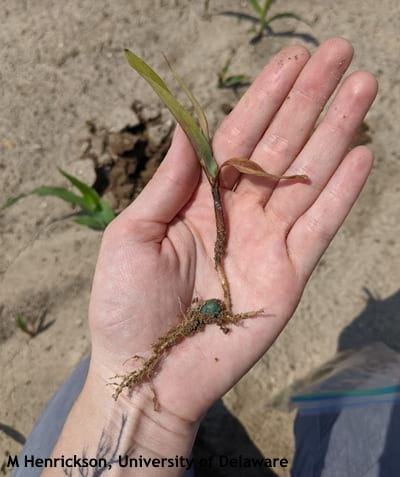Madeline Henrickson, Graduate Student and Alyssa Koehler, Extension Field Crops Pathologist; akoehler@udel.edu
Rainfall and cooler temperatures can favor root rot caused by the oomycete pathogen Pythium. Over the past week, we have seen plants with Pythium root rot scattered throughout the region. This disease damages the roots of seedlings, leading to symptoms such as stunting, yellowing, and even death. Symptomatic plants will display brown, rotted roots and mesocotyl (Figure 1). Over the past two-years, we have observed that seedlings surviving mild to moderate Pythium infections demonstrate reduced plant health and yield (Figure 2). Seed treatments with oomycete activity can provide some protection within 10-14 days after planting and can be helpful for improving seedling emergence and reducing pre-emergent damping off. Research is currently underway to examine how populations of Pythium can be quantified in the soil, and how these populations are related to management practices like irrigation and cover crop termination timing. We aim to study if these measurements can predict problematic fields before infection.

Figure 1. Corn seedling displaying symptoms of Pythium infection

Figure 2. Pythium infected plant (left) beside a healthy plant (right)
